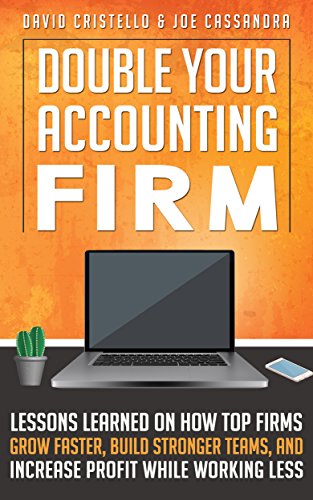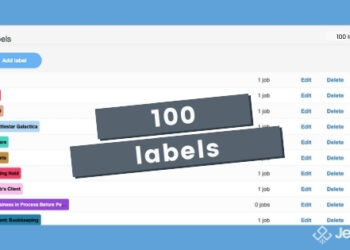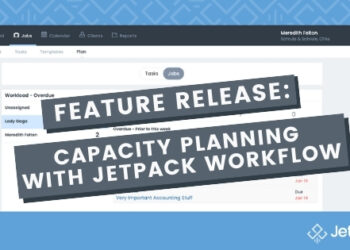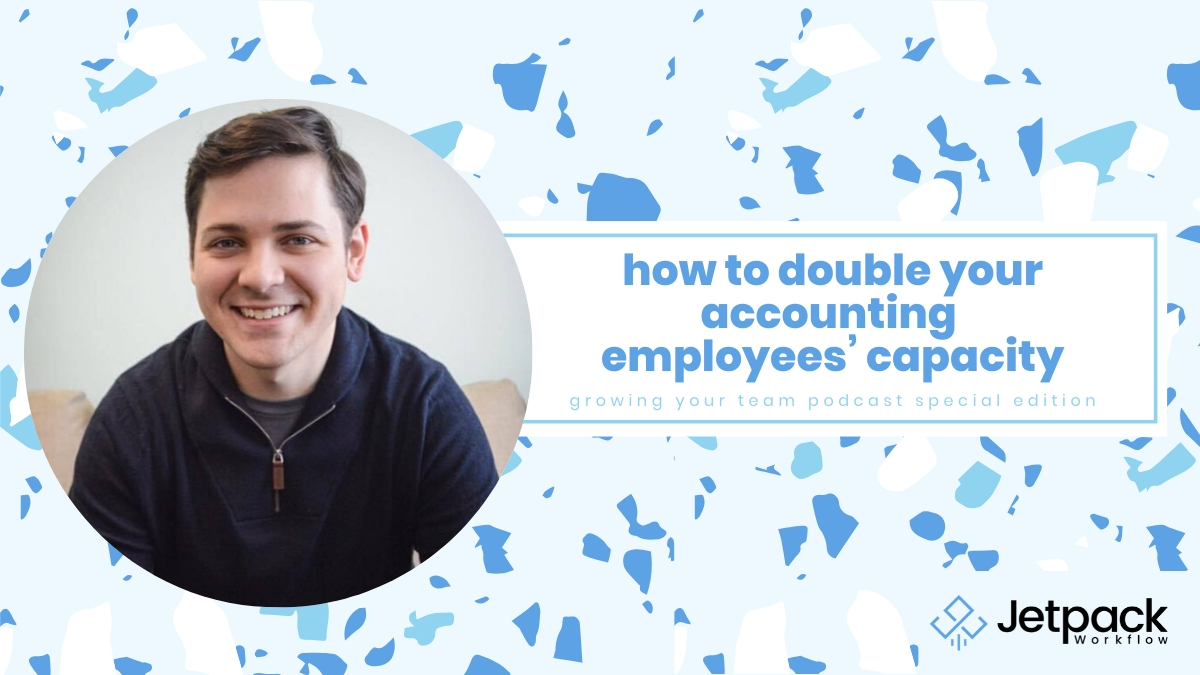How To Add 35% More Revenue With Tax Planning Services

Jackie Meyer, Founder of Meyer Tax Consulting, discovered she made 35% more revenue after adding tax planning services AND after cutting 60% of her clients.
Unbelievable!
You’ll hear everything today in this 36-minute interview.
On this episode of the Growing Your Firm Podcast, David Cristello and Jackie Meyer unpack:
- How to prove your ROI to your accounting clients
- The power of “urgency planning packages” to save you stress and time with client emails
- How to add 35% more revenue with tax planning services
ADDITIONAL LINKS:
- Meyer Tax Preparation & Accounting
- Chuck Bauer – business coach
- Accounting Biz Brokers (ask for Kathy Brent)
- Email Jackie herself (cpa@meyertax.com)
- [BONUS]: New concierge service offered by Jackie Meyer and Chuck Bauer. Free 15 minute call here.
Proving Your ROI To Clients Immediately:
Jackie Meyer, Founder of Meyer Tax Consulting, is one of the youngest female CPA firm owners in North Texas. Now, 7 years later, she’s made a massive shift in her business.
See, when Jackie first hung out her shingle, she welcomed every small business owner onto her client list. Any 1040 that needed doing, Jackie took over in the Southlake, TX region. As you can imagine, this got overwhelming fast. Multiple, low-paying clients calling and email at all times of day & night. Not to mention, Jackie started a family of her own. She had the American Dream of an up-and-coming business plus a beautiful family.
It didn’t feel like that at the time.
Not until 2016 did she realize where she should focus her attention. Jackie sat down with her business coach, Chuck Bauer, saying “I’m frustrated.” Jackie was juggling everything at once.
Bauer calmly asked: “Who do you love working with as a client? What do you love doing with them?”
Just like that, a light bulb turned on in her brain. She knew all along who her favorite (and well-paying) clients were. She knew it was local executives, CEOs, and upper management folks who needed help.
This was an easy choice for her because of these executives:
- Highly valued her services (they love and follow their accountants to the ends of the earth)
- Have a nice sized cashflow so not to push back on fees
- Plus, they are smart — Jackie learned from them as they learned from her
This was a no-brainer decision for her! Jackie became a Certified Tax Coach through the American Institute of Certified Tax Coaches. Then, she got to work focusing on her ideal client.
Her ideal clients wanted to pay less taxes. Since Jackie had helped some of her favorite clients in the past, she was able to put together a “package.” For example, if she uncovers she could save $100,000 in taxes, she’d charge a percentage of that ($15,000 in this case) and the clients would be more than happy to fork it over.
Compare that to negotiating with small businesses over $350 tax returns. Prove your ROI and clients will come running. More on this later.
Get everything you need to manage projects and meet deadlines.
Subscribe to our weekly newsletter, and get 32 free accounting workflow templates today!
sign me up!
The Power of “Urgency Planning” With Clients:
Another struggle Jackie had with clients was their time-suck. The problem most accountants have is an expectation problem.
E.G. A client sends you an IRS notice they got. The client sees it as “urgent”, you don’t as you see these notices all the time. Client wants immediate answer. On the flip side, you need to finish their tax returns, so you request documents. Client doesn’t see it as urgent and sits on the email.
That’s why urgency planning is paramount to get your life back.
Here’s how Jackie pulls it off:
- Whenever you send an email, start with either a: E = EMERGENCY (answer asap), U = URGENT (answer in next 24-48 hours), NU = NOT URGENT (answer whenever)
- Clients now know how to filter their emails from you. You do as well.
- Whenever a client doesn’t send you an email with one of these ‘codes,’ kindly remind them and get back on track.
DAVID’S TIP: Give your customers the words they need to respond to you. Starbucks names their coffee sizes, e.g. ‘vente,’ You must do the same with your clients so you’re both on the same page.
Jackie received ZERO complaints about switching to this system. In fact, many clients now appreciated it. If a client didn’t embrace the change, Jackie made the decision whether it was worth keeping the client.
This time management strategy allowed her really to expand her tax planning services.
How To Add 35% More Revenue With Tax Planning Services:
After cutting some clients and figuring out who her ideal client was, it was time to focus her business.
First of all, tax planning consulting is the EASIEST way to show ROI to a client. Hands-down. You are doing a tremendous service to your clients. A service they understand — it saves them money.
One client, she saved $150,000 in taxes. Naturally, this client was a cheerleader for Jackie’s firm. She asked if he would be the “guinea pig” for her new packages she would roll out to executives.
After getting excellent feedback, she put together 3 different packages: Basic, Pro, Elite. Each came with an onboarding fee (key to get money upfront) plus monthly maintenance.
As mentioned, you see a huge shift in revenue doing a value price based on the ROI vs. a straight hourly billing system. For example, a regular $3,000 tax client would typically turn into a $10,000/year tax planning services client. Sprinkle in a $500 onboarding fee and $200 monthly fees, and the lifetime value of a client is exploding.
One thing that is interesting to note —- no clients asked: “Why haven’t you been consulting us on tax planning before?” Jackie was already doing a great job with tax returns etc. Now, she was completely focused on the goal of ‘saving’ on tax, which allowed her to focus the client as well.
The Magic Sauce = FIRE CLIENTS:
To make room for her profitable clients, Jackie had to take a contrarian approach … she would have to fire clients. Jackie’s fully committed to working with executives and thus small business owners aren’t the best fit for her.
She will instead refer them out. At one point, she sold off 60% of her client base. In one instance, another firm owner was going to buy them but backed out at the last minute. This really threw a wrench in the long-term plans.
Luckily, a business called Accounting Biz Brokers swooped in and lent a hand.
Rather than simply giving away leads for free, Jackie makes a tidy income referring out clients that aren’t a fit. “You do a more a disservice firing them than selling them.,” Jackie says to those who think it’s “wrong” to sell leads. With selling, you can do hand-holding until the old client is fully integrated into the new firm. Simply dropping the client leaves them stranded at sea.
Well, after cutting 60% of her client list, she is up 35% in revenue!
It really is incredible.
Jackie’s advice if you’re ready to do the same: Don’t get stuck in the grind. Follow your passion in this space! It’ll work itself out!
HAVE YOU HAD A ENLIGHTENING MOMENT AS JACKIE DID? HOW DID YOU ACT ON IT? DID IT INCREASE REVENUES? Comment below with your thoughts.
Related Articles:








 On July 25, 2017, our book
On July 25, 2017, our book 





